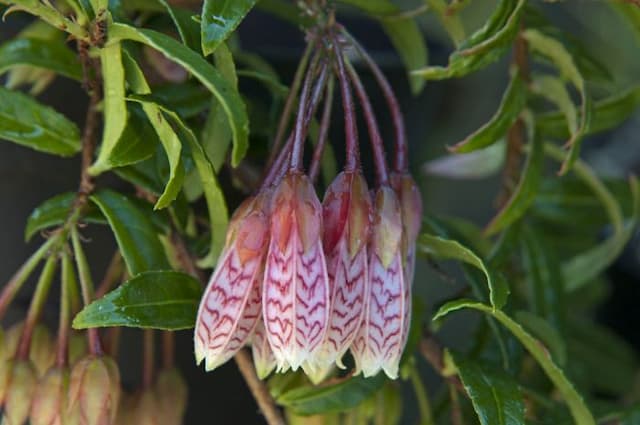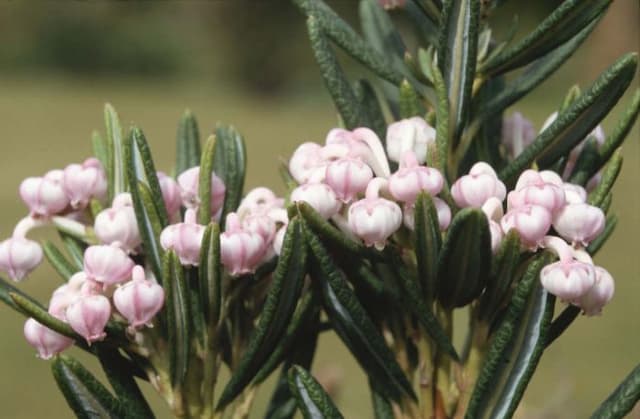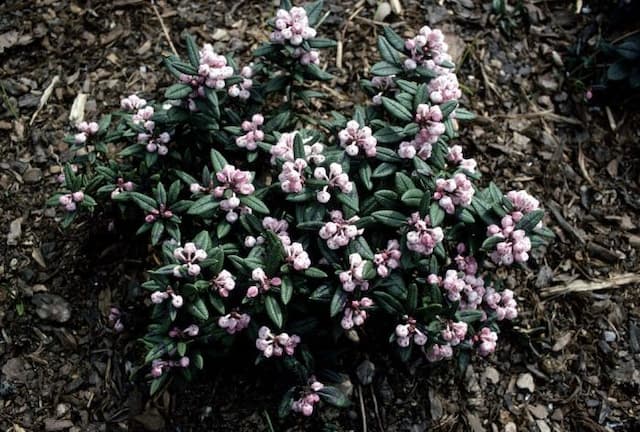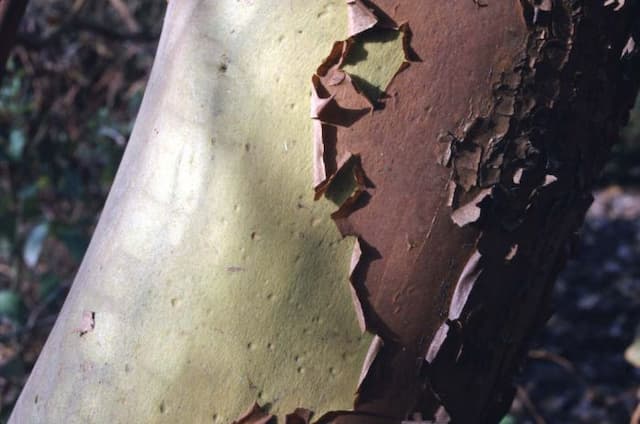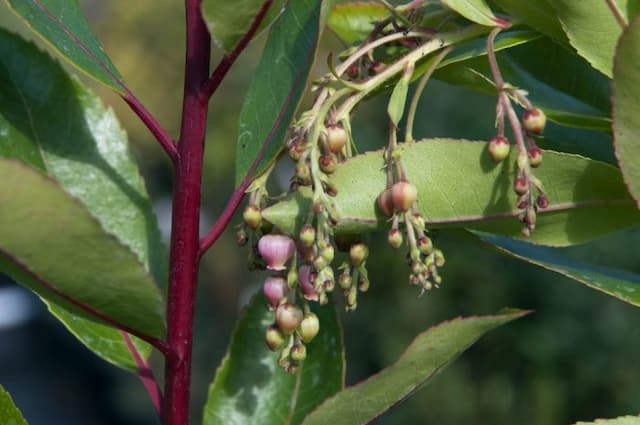Tree Heath Erica arborea var. alpina











ABOUT
The plant commonly known as Tree Heath is an evergreen shrub characterized by its dense foliage and woody stems. The small, needle-like leaves are arranged in whorls around the stems and exude an appealing dark green hue, providing a vibrant and lush appearance throughout the year. When it blossoms, it produces numerous small, bell-shaped flowers, which range in color from white to a delicate shade of pink. These flowers typically cluster near the ends of the branches, offering a visually striking contrast against the dark foliage. The overall shape of the Tree Heath is somewhat conical, contributing to its popularity as an ornamental plant in gardens. The bark is also notable for its rough texture, which can add an interesting tactile element to the plant's presentation.
About this plant
 Names
NamesFamily
Ericaceae
Synonyms
Tree Heath, Giant Heather, Alpine Tree Heath
Common names
Erica arborea var. alpina.
 Toxicity
ToxicityTo humans
The Erica arborea var. alpina, commonly known as tree heath, is not widely recognized as a toxic plant to humans. There is limited information about its toxicity, but it is generally not considered poisonous. Therefore, it is not commonly associated with symptoms of poisoning or adverse health effects upon ingestion. However, as with any plant, individual allergies or sensitivities could possibly occur, so it is advisable to handle plants with care and not consume parts of plants that are not known to be safe for consumption.
To pets
The tree heath is not commonly known to be toxic to pets. There is little to no evidence suggesting that the Erica arborea var. alpina presents a significant risk if ingested by pets. However, the general rule of thumb with non-edible plants is to prevent ingestion due to possible individual reactions or sensitivities. While no specific symptoms of poisoning are generally associated with this plant, pet owners should still exercise caution and discourage pets from chewing on or ingesting parts of it. If a pet does consume tree heath and exhibits unusual symptoms, it is advisable to consult a veterinarian.
 Characteristics
CharacteristicsLife cycle
Perennials
Foliage type
Evergreen
Color of leaves
Green
Flower color
White
Height
3-6 feet (0.91-1.83 meters)
Spread
3-4 feet (0.91-1.22 meters)
Plant type
Shrub
Hardiness zones
8
Native area
Europe
Benefits
 General Benefits
General Benefits- Ornamental Value: Erica arborea var. alpina, commonly known as tree heath, is prized for its aesthetic appeal due to its evergreen foliage and white, bell-shaped flowers that add beauty to gardens and landscapes.
- Wildlife Attraction: The flowers of tree heath provide nectar for bees and other pollinators, playing a role in supporting local biodiversity.
- Erosion Control: The dense root system of tree heath can help stabilize soil, reduce erosion on slopes, and potentially prevent landslides.
- Adaptability: Tree heath is adapted to grow in a variety of soil types and conditions, making it a versatile plant for different garden settings.
- Low Maintenance: Once established, tree heath requires minimal care, which is advantageous for gardeners seeking low-maintenance landscaping options.
- Drought Tolerance: Tree heath is known to tolerate periods of drought, which can be particularly useful in regions with water scarcity or for xeriscaping.
- Habitat Formation: Tree heath can form dense thickets that provide shelter and breeding grounds for various bird species and small mammals.
- Craft Material: The wood of tree heath is hard and fine-grained, making it suitable for crafting small objects such as pipes and decorative items.
 Medical Properties
Medical PropertiesThis plant is not used for medical purposes.
 Air-purifying Qualities
Air-purifying QualitiesThis plant is not specifically known for air purifying qualities.
 Other Uses
Other Uses- The wood of Tree Heather, due to its hardness and fine grain, is used for making briar wood pipes, a popular tool for smoking tobacco.
- The dense branches of Tree Heather can be used for carving small decorative items or even crafting jewelry, such as pendants or beads.
- In traditional practices, the wood shavings from Tree Heather have been used as a natural filler in mattresses and pillows for a firm, supportive feel.
- Due to its durability, the wood is sometimes used to make handles for tools, providing a sturdy and comfortable grip for garden instruments or small hand tools.
- Tree Heather is employed in crafting musical instruments, particularly in the creation of woodwind instruments for a distinct, warm tonal quality.
- The plant's plentiful nectar production makes it an excellent choice to cultivate near bee hives, encouraging pollination and supporting honey production with a unique flavor.
- In rural crafting, the stiff stems of Tree Heather can be woven into baskets, providing rustic and decorative housewares or practical garden trugs.
- The flowers and foliage of Tree Heather, which retain color and form when dried, are popular for use in creating long-lasting and attractive floral arrangements.
- Tree Heather's dense growth habit makes it suitable for use as a protective ground cover plant in large gardens or wild areas to prevent soil erosion and promote habitat support for wildlife.
- Its evergreen nature allows Tree Heather to be utilized in winter gardens for year-round visual interest, especially in regions with mild winters where it can thrive.
Interesting Facts
 Feng Shui
Feng ShuiThe Tree Heath is not used in Feng Shui practice.
 Zodiac Sign Compitability
Zodiac Sign CompitabilityThe Tree Heath is not used in astrology practice.
 Plant Symbolism
Plant Symbolism- Protection: As a sturdy and resilient plant, Tree Heath or Erica arborea var. alpina symbolizes protection against adversity and the ability to thrive in challenging conditions.
- New Beginnings: Often one of the first plants to bloom in spring, it is a symbol of new beginnings and the renewal of life.
- Solitude: Found growing in the isolated and serene mountainous regions, Tree Heath can represent solitude and a connection with one's inner self.
- Good Luck: In some cultures, this plant is considered to bring good luck and is sometimes kept in homes or gardens to attract positive energy.
 Water
WaterThe most common name for Erica arborea var. alpina is Tree Heath. For watering Tree Heath, it is important to keep the soil consistently moist without overwatering. A good method is to water deeply and then allow the top inch of soil to dry out before watering again. During the growing season, this might mean watering with approximately 1 gallon per plant every week, adjusting for rainfall and temperature, to ensure adequate hydration. In winter, reduce the frequency of watering to match the reduced growth and evaporation rates. Be cautious of waterlogging, as Tree Heath does not tolerate standing water well.
 Light
LightTree Heath thrives in conditions where it can receive full sun to partial shade. To ensure the best growth and flowering, place the plant in a spot where it receives at least six hours of direct sunlight daily. However, in hotter climates, provide some afternoon shade to protect it from intense, scorching sun rays that can stress the plant.
 Temperature
TemperatureTree Heath prefers a temperate climate and can survive in temperatures that range from around 20°F to 75°F. It is important, however, that it is not exposed to prolonged periods below freezing or to extreme heat. The ideal temperature range for Tree Heath is between 50°F and 70°F, where it can grow most vigorously without stress from the environment.
 Pruning
PruningPruning Tree Heath is mainly done to maintain its desirable shape and to encourage bushier growth. The best time for pruning is in the spring after the last frost but before the onset of new growth. Pruning can be carried out annually if desired, to remove any dead or diseased branches and to tidy up the plant's appearance.
 Cleaning
CleaningAs needed
 Soil
SoilTree Heath (Erica arborea var. alpina) thrives in acidic, well-draining soil with a pH between 4.5 and 6.0. A soil mix containing peat moss, sand, and pine bark is ideal. Ensuring good aeration and drainage while retaining moisture is key for healthy growth.
 Repotting
RepottingTree Heath should be repotted every 2 to 3 years to refresh the soil and accommodate root growth. Repotting in the spring is generally best to allow the plant to establish in its new container before the growing season.
 Humidity & Misting
Humidity & MistingTree Heath prefers moderate to high humidity levels. Aiming for a relative humidity of around 50-60% would be suitable for this plant. Avoid excessively dry conditions to ensure healthy foliage and growth.
 Suitable locations
Suitable locationsIndoor
Ensure bright light, cool temps, and acidic soil for indoor Tree Heath.
Outdoor
Plant in partial shade, acidic soil, and water regularly outdoors.
Hardiness zone
7-9 USDA
 Life cycle
Life cycleErica arborea var. alpina, commonly known as tree heath, begins its life cycle as a seed that germinates in well-drained, acidic soil, often in spring or after a fire event that stimulates growth. The seedling stage follows, where the plant establishes its primary root system and begins to develop its needle-like leaves. In the vegetative stage, the tree heath grows rapidly, developing a woody stem and branching habit, forming a shrub-like appearance that can reach up to 2-6 metres tall. The reproductive stage sees the development of clusters of small, bell-shaped white flowers that are pollinated by insects, primarily bees. After successful pollination, the flowers develop into capsules containing numerous seeds that, once mature, are dispersed by wind or animals to start a new growth cycle. In the final stage of its life, the plant may experience senescence, where growth slows, and it may die back, especially if subjected to extreme conditions, disease, or old age.
 Propogation
PropogationPropogation time
Spring to early summer
The most popular method of propagation for Tree Heath, Erica arborea var. alpina, is by semi-hardwood cuttings. This technique is typically done in late summer. The process involves selecting healthy, non-flowering stems and cutting them into lengths of 4 to 6 inches (10 to 15 centimeters). Each cutting should have several sets of leaves. The bottom set of leaves is removed, and the cutting is dipped in rooting hormone before being placed in a well-draining soil mix. It's important to maintain high humidity around the cuttings, which can be achieved by covering them with a plastic bag or using a mist system. Roots usually develop within a few weeks, after which the new plants can be gradually acclimated to less humid conditions before being transplanted.
